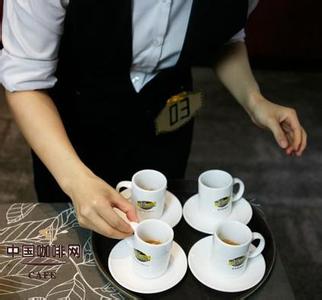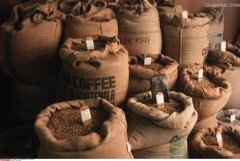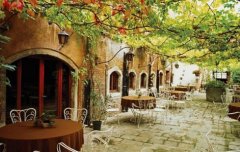Floral and fruity Galapagos Coffee Bean Flavor Taste Aroma Description

This is what makes Galapagos Coffee unique, because the archipelago is located at the confluence of cold currents in Peru in the south and warm equatorial currents in the north. Affected by the cold and warm ocean currents, a small ecological environment has been formed. The climate of 500m here is equivalent to that of 900m-1800 m inland. This terrain is very suitable for the growth of very hard coffee beans (SHB) with high acidity, and it is also the key to the high quality of coffee Ecuador is a country located in South America, coffee beans are divided into two varieties: Galapagos and Gigante, both of which have the characteristics of large particles and heavy weight. Galapagos (Galapagos) is pronounced in Spanish and we translate it into Cologne in Chinese. It belongs to Ecuador nationally, but its coffee will not be named Ecuador, because although Galapagos belongs to Ecuador, it is located in the Pacific Ocean, more than 1100 kilometers away from the mainland and covering an area of more than 7500 square kilometers. it is an archipelago of 13 islands and 19 reefs solidified by lava from undersea volcanoes, stretching from the South American continent to the Pacific Ocean. There are 1000 kilometers of coffee beans are really picky about the environment in which they grew up. First of all, they must live in the upper level (altitude), warm and humid climate, sunny and shady, fertile soil and plenty of water. I like cool but not too cold. I like warmth but not too hot. Most of the places that meet these conditions are in the tropics between latitude 25 °south and latitude 25 °north around the equator, which is often referred to as the coffee belt. We are familiar with things like Ethiopia and Kenya in Africa, Brazil and Colombia in South America, Panama and Guatemala in Central America, Indonesia and Yemen in the Asia-Pacific region. These are the more famous coffee producing countries, and many of our favorite boutique coffees come from these countries. This time I would like to introduce you to a coffee that is rarely heard of-Galapagos Coffee. Do you feel strange? Let me put it another way-- Ecuador, are you familiar with it?
The quality of Galapagos coffee is very good, and it is mainly exported to Scandinavia and other Nordic countries, so our people know little about it. As coffee is consumed by people all over the world, the world coffee industry is also developing towards a mass production model. A small-scale planting model like Galapagos actually limits its development, and if it does not expand its scale, it may eventually be forced to give up because of unprofitable profits. Coffee plantation owners here are also aware of this problem and gradually expand the area of their estates in the early 1990s to make full use of their unique advantages.
Galapagos (Galapagos)-Organic coffee from giant turtle island
The Galapagos archipelago is now designated as a national park by Ecuador and listed as "human property" by UNESCO. It is far from land and largely avoids the impact of human behavior on nature. In order to maintain the local natural ecology as much as possible, Ecuador legally prohibits the use of all kinds of artificial fertilizers, herbicides and pesticides. Therefore, the Galapagos coffee beans are all organic coffee beans, which are grown without any chemical agents and are recognized as natural green boutique coffee. this naturally grown coffee is mild and rich in taste, sweet in sour and slightly floral, fruity and caramel.
In fact, most island beans are very likeable, but low production and high prices also widen the gap between them and the public. Recently, this Galapagos appeared in our students' coffee tasting list. After medium roasting, it shows a good sense of balance, soft acidity, refreshing flower fragrance, like jasmine and early autumn sweet-scented osmanthus, which is really a bit of blue mountain style! If you like the Blue Mountain style and consider the value for money, choose this Galapagos.
Galapagos (Galapagos)-Organic coffee from giant turtle island
When looking for information, I was deeply attracted by the beautiful scenery of the Galapagos Islands. Scientists have verified that there are more than 700 kinds of ground animals, more than 80 species of birds and many insects living on the island. Darwin visited the island. I got the insight from it and created the Theory of Evolution. On this island called the living Museum of Biological Evolution and showroom, we can see very unusual animal species such as terrestrial iguanas and giant turtles, and our coffee is really much younger than these rare species! But they are like different colors, and the Galapagos Islands is a palette that brings many colors together to form a colorful picture that is presented to the world.
When looking for information, I was deeply attracted by the beautiful scenery of the Galapagos Islands. Scientists have verified that there are more than 700 kinds of ground animals, more than 80 species of birds and many insects living on the island. Darwin visited the island. I got the insight from it and created the Theory of Evolution. On this island called the living Museum of Biological Evolution and showroom, we can see very unusual animal species such as terrestrial iguanas and giant turtles, and our coffee is really much younger than these rare species! But they are like different colors, and the Galapagos Islands is a color palette, which brings many colors together to form a colorful picture, which is presented to the world. In fact, most island beans are very likable, but low production and high prices also widen their distance from the public. Recently, this Galapagos appeared in our students' coffee tasting list. After medium roasting, it shows a good sense of balance, soft acidity, refreshing flower fragrance, like jasmine and early autumn sweet-scented osmanthus, which is really a bit of blue mountain style! If you like the Blue Mountain style and consider the value for money, choose this Galapagos. The Galapagos archipelago is now designated as a national park by Ecuador and listed as "human property" by UNESCO. It is far from land and largely avoids the impact of human behavior on nature. In order to maintain the local natural ecology as much as possible, Ecuador legally prohibits the use of all kinds of artificial fertilizers, herbicides and pesticides. Therefore, the Galapagos coffee beans are all organic coffee beans, which are grown without any chemical agents at all, and are recognized as natural green boutique coffee. This naturally grown coffee is mild and rich in taste, sour and sweet. The quality of Galapagos coffee with a hint of flowers and fruit and caramel is very good, mainly exported to Scandinavia and other Nordic countries, so our people know very little about it. As coffee is consumed by people all over the world, the world coffee industry is also moving towards a mass production model. A small-scale planting model like Galapagos actually limits its development. If it is not expanded, it is likely that it will eventually be forced to give up because of unprofitable profits. Coffee plantation owners here are also aware of this problem and gradually expand the area of their estates in the early 1990s. To make full use of its unique advantages, the coffee in the Galapagos Islands has its own uniqueness. It was brought to the island around 1870, and 150 years have passed now. Coffee varieties are still the original species of coffee grown at that time-the ancient bourbon species, never bred by any artificial breeding. And the coffee on the island is basically grown in the mountains about 500m above sea level. Friends who have seen our coffee bean series should know that the higher the altitude, the better the quality of coffee. Generally speaking, it is necessary to reach an altitude of 1700 to 2100 meters before it can be called high-quality coffee beans. Isn't this 500m a long way off?
Important Notice :
前街咖啡 FrontStreet Coffee has moved to new addredd:
FrontStreet Coffee Address: 315,Donghua East Road,GuangZhou
Tel:020 38364473
- Prev

A brief introduction to the treatment method of grinding degree and baking degree of fine coffee beans
Yega Xuefei is divided into two categories according to the different ways of handling raw coffee beans: category An is washed, and the grade standard is set by the American Fine Coffee Association SCAA, which is divided into Gr-1;Gr-2, the smaller the Arabic numeral, the higher the grade, and the distinct style of G1 Yega Chefe. The flavor of citrus and floral flavor in the coffee liquid is irresistible to everyone; Class B is the sun-treated raw coffee beans.
- Next

A brief introduction to the history and culture of the origin and development of Galapagos boutique coffee beans with balanced acidity
In the mid-15th century, there were legends about enchanted mysterious islands among fishermen fishing in the western Pacific Ocean of South America. It is said that the islands can sometimes be seen clearly from a distance, but when the ship approaches, it disappears again; sometimes it looks like a galleon, sometimes it shows the shape of a witch. The fishermen called these islands Magic Island and thought it was there.
Related
- Detailed explanation of Jadeite planting Land in Panamanian Jadeite Manor introduction to the grading system of Jadeite competitive bidding, Red bid, Green bid and Rose Summer
- Story of Coffee planting in Brenka region of Costa Rica Stonehenge Manor anaerobic heavy honey treatment of flavor mouth
- What's on the barrel of Blue Mountain Coffee beans?
- Can American coffee also pull flowers? How to use hot American style to pull out a good-looking pattern?
- Can you make a cold extract with coffee beans? What is the right proportion for cold-extracted coffee formula?
- Indonesian PWN Gold Mandrine Coffee Origin Features Flavor How to Chong? Mandolin coffee is American.
- A brief introduction to the flavor characteristics of Brazilian yellow bourbon coffee beans
- What is the effect of different water quality on the flavor of cold-extracted coffee? What kind of water is best for brewing coffee?
- Why do you think of Rose Summer whenever you mention Panamanian coffee?
- Introduction to the characteristics of authentic blue mountain coffee bean producing areas? What is the CIB Coffee Authority in Jamaica?

